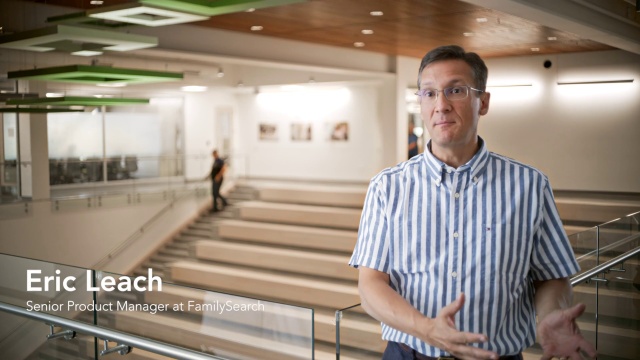
Non-profit
FamilySearch + UserTesting
See how FamilySearch helps people around the world find joy in connecting with their relatives


About the company
FamilySearch is the largest genealogy organization in the world, with roots going back to 1894. Offering free access to its world-renowned resources, services, and over 4 billion genealogical records, FamilySearch is used by millions of people each year to learn more about their family history.
Get Started Now
Contact Sales- #1Top-rated user experience on multiple continents
 An illumi award for turning insights to action
An illumi award for turning insights to action- 10XImproved access to customer insights on demand
After serving North America for decades, FamilySearch was excited at the prospect of opening up its service to China, home to 20 percent of the world’s population. But the product and design team knew the expansion would be a huge undertaking—one that needed to go smoothly to provide the best experience possible for new users in a foreign language.
FamilySearch knew they had built an enduring and popular platform experience. But they knew it was based on decades of Western cultural assumptions, and that they needed to re-examine their assumptions about how to provide the search experience in a part of the world with very different cultural norms. The team knew they needed fresh perspectives from real users. However, it was difficult, expensive, and time-consuming to find bilingual users willing to share the feedback and insights they needed to move forward.
So FamilySearch partnered with UserTesting and was immediately able to find dozens of target test contributors, even though they set narrow criteria, including bilingual fluency in Chinese and English and a number of other specific requirements.
“It just blew us away,” says Christine Chiang, Senior UX Designer. “We thought there’s nobody UserTesting would be able to find who met our criteria, but they found plenty of people almost immediately. It just works!”
FamilySearch immediately saw the benefits of moderated and unmoderated video recordings of prospective users. UserTesting’s Live Conversation and its robust insights platform allow FamilySearch to cut the time and expense of user research exponentially.
The impact of these tests tends to be immediate and substantial. For example, FamilySearch learned firsthand about how different Chinese customer expectations are compared to Americans. As Eric Leach, Senior Product Manager, says, “I think everyone gets excited when they find a family record for the first time. But for our Chinese users, they generally don't find just one record at a time. The way the Chinese genealogical system works, it's like a family tree in reverse where instead of starting with yourself and going backward in time, you start with a family name from a single individual who may have lived hundreds of years ago and then search through an entire book with a thousand people stemming from that one person. So when you make that kind of discovery, it's like taking your feelings and multiplying them by a thousand.”
Today, FamilySearch product and design managers don't just get statistics and analytic data, they can see the non-verbal cues and emotion behind what causes problems for real users, and, better yet, what success looks like in the eyes of the customer with a clear understanding of why.
“Having video and transcriptions makes it so much easier to present insights and recommendations to stakeholders. It has an emotional aspect that people remember that is more effective at driving decision-making and meaningful change than stats alone,” says Grant Skousen, UX Design Manager.
In the China expansion project, FamilySearch found that Chinese users wanted different types of information, not just translated information. This led to a complete redesign of how information was featured on the Chinese version of FamilySearch and is resulting in faster adoption than the team could've hoped for.
“The more we understand about the outcomes that are important to our customers and why, the easier it is for us to start envisioning and crafting experiences that can deliver on those outcomes,” says Gregg Richardson, Head of Product Strategy.
With UserTesting, FamilySearch is discovering “aha” moments again and again. They're winning awards for their work. Their culture is getting stronger. Their customers are feeling happier and telling their friends about their experiences with FamilySearch.
As Ryon Bazzle, UX Designer, says, “Each time somebody uses our platform and finds a relative they recognize, it's like gold that makes them excited to keep going. We're constantly trying to make those connections faster, easier, and more enjoyable for them. And we couldn't do that as well as we do without UserTesting."

Related customer stories
Get the latest news on events, research, and product launches
By submitting the form, I agree to the Privacy Policy and Terms of Use.



